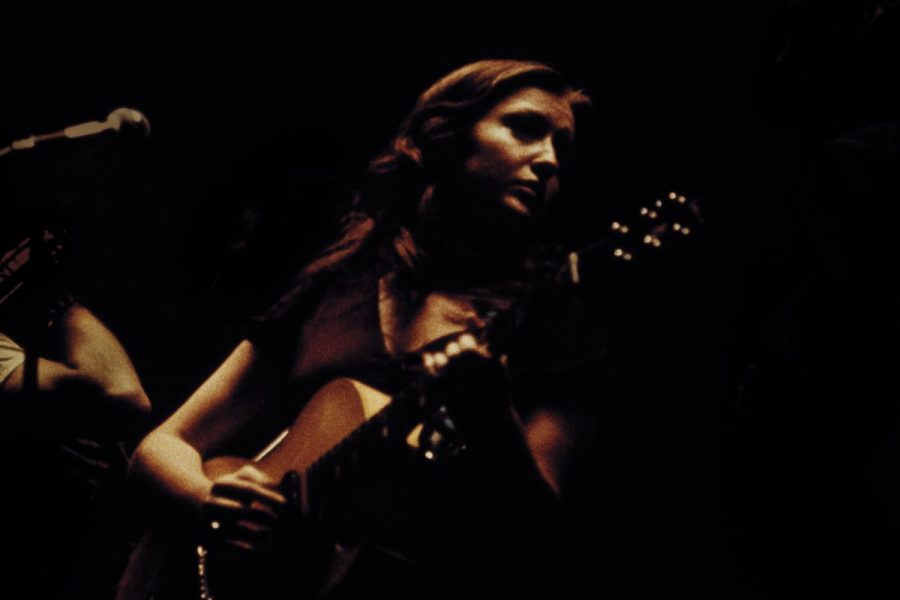There’s a tremendous amount of pleasure to be had in David Batty’s “My Generation,” a sloppy wet kiss to Michael Caine and British youth culture of the 1960s. Loaded with great footage from the era and accompanied by superbly cleaned-up music tracks from the Kinks, the Beatles, the Rolling Stones and many others, this love letter-as-documentary offers 85 minutes of good old fun. What it doesn’t do is posit any genuine analysis or even make a head-nod to diversity. But this is Caine’s narrative about the unapologetic working class taking over popular culture, and the writers as well as music mogul Simon Fuller, acting as top producer, have no interest in countering their star’s gleefully empowering chronicle of his youth. Voiceover interviews with such key players of the era as Paul McCartney, Marianne Faithfull, Twiggy and Mary Quant add to the overall feast, making the film an attractive offering for all platforms.
Britain in the 1950s was dull, announces Caine, though doesn’t every generation say that about the era before their own gloriously self-satisfied arrival? What’s undeniable is the momentous shift toward youth culture beginning in the 1960s, as well as the opening up of opportunities for white working-class creative types who no longer submitted to makeovers designed to smooth out their roughness. In one of the more telling anecdotes, Caine talks about auditioning for “Zulu,” his breakthrough role, and accurately suggests that had the director, Cy Endfield, been British instead of American, Caine’s working class London accent would have eliminated any hope of being cast in the role of an upper-class officer. That’s an undeniable fact.
Far more shaky is the suggestion that the working class in the 1960s was the first generation in Britain to thumb its collective nose at convention. On-the-street interviews from the era with stuffed shirts bemoaning the appearance of long-haired men in flowery blouses expose middle-class attitudes, but the filmmakers choose to ignore the fact that the upper class has always played with transgression in ways designed to shock the bourgeoisie. What made the 1960s different was that the working class was playing the same game, and emulating “our betters” was no longer an acceptable form of behavior. Nor was emulating our elders: Freedom from convention was the hallmark of a social revolution that impacted everything from art, music and clothing to changing concepts of morality. Of course, every Englishman knows the class system remains the key determinant of opportunity, but in the art and entertainment world, coming from the wrong side of the tracks is actually now more desirable than a boarding school certificate, and that’s definitely due to the upheavals of the 1960s.
Batty divides the film into three parts, roughly corresponding to the awakening, the flourishing and the decline of 1960s pop culture. Alongside nods to expected historic markers like the Beatles performing at Liverpool’s Cavern Club are more unanticipated moments, such as Roger Daltry talking about the profound impact of seeing Elvis perform: “For the first time in my life, I saw someone who was free.” That’s about the only time in the film there’s a mention of transatlantic influences on the British scene.
From there, the documentary plunges headlong into the intoxicating psychedelic playpen of Pop Art, Vidal Sassoon haircuts, and Mary Quant micro-miniskirts, reminding audiences (or teaching them for the first time) that in the 1960s, color and pattern were transgressive and hip, unlike today’s tediously conformist black monochromaticity. Suddenly, thanks to the British Invasion, being young and British meant you were cool, stylish and glam, tuned into the best music, clothes and art movements. Models such as Jean Shrimpton and Twiggy set new standards for beauty, and groups like the Animals, the Kinks, the Stones and of course the Beatles set the tone, guiding a generation from the innocent charm of “Love Me Do” to the raucous hunger of “(I Can’t Get No) Satisfaction.” By the end of the decade, hedonism took a darker turn. The Vietnam War acted as a political coming of age, and the destructive nature of so much heavy drug use began to take its toll, symbolized by the death of Brian Jones and Faithfull’s near-fatal drug overdose, both in 1969.
For Caine, “My Generation” is a chance to look back in nostalgic delight at his salad days, allowing him to gamely reminisce about his time as one of the “it” boys of London. He even gets to swan around in the original Aston Martin DB4 he drove in “The Italian Job.” None of the others interviewed are seen on screen — whether that’s because the producers wanted to maintain the aura of 1960s youth, or it was the only way to get these people to talk, remains open for speculation. It’s also likely that writers Dick Clement and Ian La Frenais allowed themselves to be guided by Caine’s insistence on working-class culture, ignoring the fact that some of those included, most especially Faithfull, are from posh backgrounds.
If you set aside analytical skills however, it’s easy to sit back and enjoy the wealth of archival clips accompanied by fantastic music tracks that seem to have been remastered for the occasion (lord knows how much all the music rights must have cost). Ben Hilton’s editing successfully crams in a great deal without a sense of whiplash.



